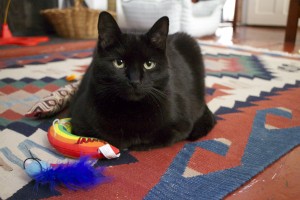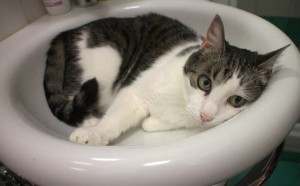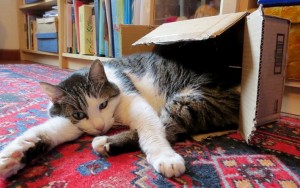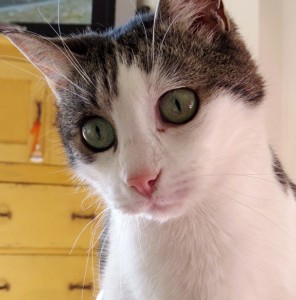This post will explain why I haven’t posted a word on the blog for many days, why I have “disappeared” from Facebook and why I haven’t answered any blog reader queries since Sunday, April 27, which is when Stefano and I returned to Cape Cod from New York City.
By the way, we had a total BLAST in New York…an incredible amazing fabulous fun interesting time…and let me add that a very big part of our marvelous NYC experience was the time we spent with my blog reader John, his wife and their two super-adorable pugs…thankyouthankyouthankyou, you two (I will be sending you a package soon!)!!!!!
But I’m not going to talk about New York right now…I will write a separate post about it at some point…
No, today’s topic is the week from hell (mentioned in this post’s title) = the week after we got back from New York…
Where do I start? Well, my father taught me it’s always good to start at the beginning, so that’s what I’m going to do.
Let’s see. As I mentioned, Stefano and I got back to my parents’ house on Sunday, April 27, in the late afternoon. Everything was fine.
Then, on Monday night, my father mentioned he’d had a bit of weakness in his legs while he was going up the stairs to go to bed. We thought nothing of it. He’s very tall and has had a few “balance” problems for years. We just thought he was tired. After all, he’s 86 and a half years old…
The following day (April 29), right after lunch, I heard a strange banging noise coming from the half bathroom on the ground floor. I knew my father was inside, so I asked if he was okay. He answered that he had somehow slipped to the floor and couldn’t get up. I tried to open the door, but he was leaning against it. Now, this is a very small bathroom and, as I mentioned, my Dad is a big guy, so I called Stefano and finally, after getting my Dad to move slightly away from the door, the two of us managed to get inside. My Dad was exhausted and sweaty from the effort of sliding away from the bathroom door. And, since he couldn’t stand on his own, we essentially picked him up and took him into the dining room.
Mom called an ambulance, even though Dad tried to reassure us that he was fine and didn’t want to go to the hospital, and in fact he looked fine and was speaking normally. But we knew that what had happened in the bathroom wasn’t normal and wanted to have him checked out.
After getting to Cape Cod Hospital, Dad had a bunch of tests done, including a CT scan. We were told that nothing out of the ordinary had showed up but that he was being admitted to the hospital on “observation” status for the night.
The following morning (this would have been Wednesday), Dad had an MRI that showed he’d had a mild stroke (more than a TIA, but not a massive stroke). We were not informed about the stroke, however, until late afternoon, when Dad’s hospital doctor finally came to speak with us.
We were stunned. Absolutely stunned.
And this brings me to WHY I’ve given so many details about what happened. Until now, I had been under the impression that strokes are always accompanied by slurred speech and drooling and paralysis. Well, that is not the case. There are different types of strokes, and different levels of severity.
Dad’s stroke was caused by a blood vessel popping and bleeding in the right side of his brain, which controls the left side of his body..I believe this is called a hemorrhagic stroke. As far as I can tell, and from what we’ve been told, his main post-stroke symptom is a bit of weakness on the left side of his body (weakness, not paralysis, thank goodness), so he should be able to recuperate 100%…or thereabouts.
After a four-day hospital stay, Dad was transferred to a rehabilitation center, where he will remain for about two weeks. He’s doing amazingly well, I think. And I have to say that I’m really impressed with the level of care he’s been receiving, both at the hospital and now at the rehab center.
Well, I was supposed to go back home to Italy with Stefano on Saturday, May 3. But I couldn’t leave, of course. I’ll be staying here until my father comes home…and until I’m sure that my parents will be okay by themselves.
Needless to say, from now on we will be paying plenty of attention to any signs of weakness in our limbs…all possible signs of a stroke…
And that is the main reason why I’ve written this post…this information could possibly be of use to others, too.
Always pay attention…















